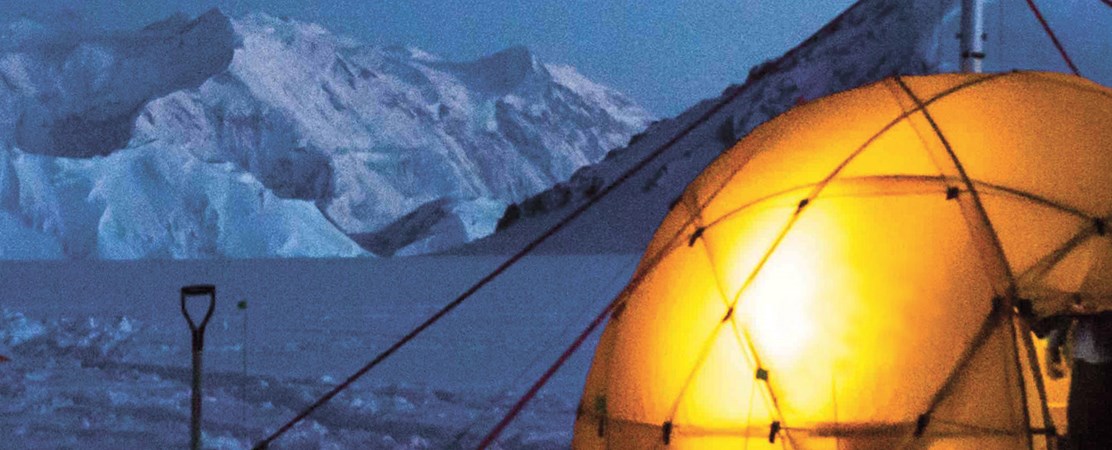Stories from the Ice

By Karl Kreutz, Professor, University of Maine and Cameron Wake, Research Professor, University of New Hampshire and Erich Osterberg, Associate Professor, Dartmouth College and Alison Criscitiello, Director, Canadian Ice Core Lab, University of Alberta
We have all seen or heard of the evidence of ice melting across the Arctic.
The clear retreat of glaciers and loss of sea ice provide stark and iconic examples of climate change that are impossible to ignore. The implications are profound for Earth’s climate, ecosystems, socioeconomics, security, northern communities, as well as the unique beauty of Arctic landscapes.
There remains a vast amount of land ice across the Arctic – the Greenland Ice Sheet, the ice caps of the Canadian Archipelago, and the icefields and glaciers in Alaska and the Yukon. In the cold upper reaches of these glaciers, snowfall accumulates a record of chemical changes in the atmosphere and physical changes in our climate system. The snow is eventually compressed into glacier ice with layers that are analogous to rings in a tree. The deeper you go, the older the ice is, sometimes older than 100,000 years at the bottom of the Greenland Ice Sheet.
Accessing the climate history contained in Arctic ice is a considerable challenge – the best locations are remote and cold, and the oldest ice is hundreds to thousands of meters deep. To confront this challenge, international scientific cooperation has been essential. For example, North American and European scientists have collaborated for over half a century on ice core projects on the Greenland Ice Sheet. Ice drilling, where cylinders of ice are recovered in 1–3 meter sections beginning at the surface and continuing to the bedrock, has improved dramatically in terms of speed and quality of ice recovered. The careful and detailed study of these ice cores has revealed a number of fundamental insights into the Arctic system that are critical to our climate action decisions.
A widely recognized aspect of the Arctic ice core record is the clear evidence for abrupt climate changes. These large re-organizations of the climate system occurred many times during the last glacial period (roughly 60,000 to 10,000 years ago). What makes them particularly important is the rapid nature of the transitions – large changes in temperature, precipitation, and dustiness in less than ten years – and that they had global impacts. The North Atlantic region and Antarctica were tightly connected within decades via atmospheric and ocean circulation during each of these abrupt climate changes. The ice core record clearly illustrates that over the course of recent Earth history, there is a direct and important connection between the Arctic and global climate.
This Arctic-global connection is also apparent in the ice core record in terms of recent human impacts on the Arctic atmosphere. The emissions history of a range of pollutants with health and environmental impacts – lead, mercury, sulfate, nitrate, persistent organic pollutants from industrial activity, mining and smelting, and fossil fuel use – can be precisely reconstructed and evaluated in the ice core record. While there is abundant reason to be concerned about the ongoing impact of these pollutants on northern communities, the ice core record also offers an important positive message. When the use of leaded gasoline was phased out in the 1970s, and clean air legislation reduced the emission of sulfates in the 1980s, the levels of lead and sulfate in Greenland dramatically decreased. Focused effort through prudent emissions reductions and political action can make a difference. However, we see that there are still high levels of transpacific pollutant transport that are reflected in Alaska/Yukon ice cores. These results illustrate that many of the issues facing the Arctic as a whole still retain a very regional character.
What is on the horizon in Arctic ice core science? Sea ice is a dynamic component of the Arctic system that has been notoriously difficult to reconstruct in the ice core record. Much effort is being directed at new sea ice proxy records using innovative chemical approaches. Because sea ice extent and thickness have such high regional and seasonal variability, new ice core sites are being targeted in specific areas that are sensitive to sea ice change and where seasonally-resolved records can be developed.
As the Arctic continues to warm and lose its sea ice cover, there will likely be associated changes in the Arctic water cycle, ocean circulation, and other climate parameters that will have global reverberations. The ice core record can provide context for what the future may hold – by looking at previous warm intervals in the Arctic. One such interval, known as the Holocene Thermal Maximum (9,000 to 5,000 years ago) provides a valuable test case. Ice core records covering this interval can be recovered from several locations across the Arctic and provide a valuable spatial perspective. Another warm interval of great interest is the last interglacial period (roughly 130,000 years ago) when sea levels were several meters higher than they are today.
As we move forward, an important frontier for the Arctic ice core community to explore is the co-production of knowledge with northern communities. Thus far, there has been little inclusion of northern communities in the development of scientific research questions that can be pursued through ice core research, or the use of a co-produced paleoclimate perspective that could be useful for regional decision-making by northern communities. A new approach, with a detailed understanding of Arctic climate based on state-of-the-art observations, models, and traditional environmental knowledge of northern communities, can guide ice core research to directly address northern needs and priorities.
